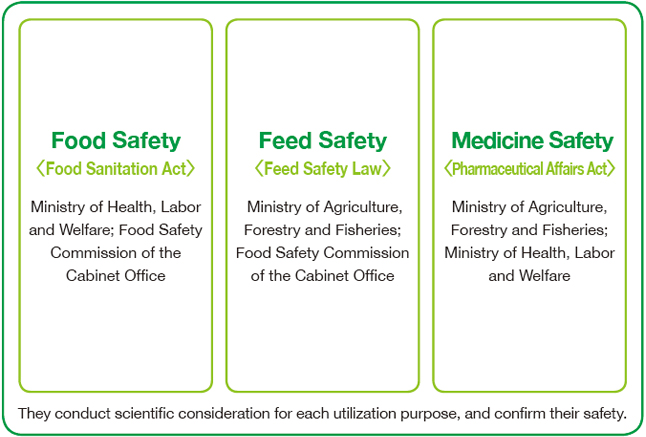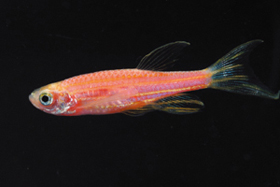Q&A for Cartagena Act
 |
I am concerned about the safety of using LMOs. |
|---|
| The Cartagena Act ensures safety through the conservation of
biological diversity. As you can see from the figure below, domestic
regulations in Japan only allow for those uses which have been
confirmed safe. Genetically modified foods, for example, are subject to regulation by the Japan Agricultural Standards (JAS) Act and the Food Sanitation Act. |

 |
I would like to know detailed information about risk assessment for each approved LMOs. |
|---|
| Please go to the website of J-BCH mentioned in the page of “Publications Concerning the Cartagena Act” (http://www.biodic.go.jp/bch/english/e_index.html) and look at the risk assessment report used for evaluation. |
 |
Are there any instances in which a genetically modified crop which is resistant to chemical herbicides has become an escaped weed? Also, if the resistant gene moves into weeds, increasing the number of weeds that cannot be killed using chemical herbicides, what will be done? |
|---|
| Most cultivated crops cannot grow without humans weeding, watering
and fertilizing them. Approved herbicide-tolerant crops are evaluated
on the basis that their tolerance will not increase their fecundity or
vitality. In addition, herbicide-tolerant crops show resistance only to
particular chemical herbicides. It is hard to think that these particular
chemical herbicides are disseminated widely and continuously in
natural environment. Therefore, they have been evaluated that they do
not have any more advantages than other plants. In addition, it is impossible for the recombinant gene to move into weeds of other species with which the LMOs cannot cross-pollinate. |
 |
I have heard that a survey conducted by the Ministry of the Environment found a hybrid between genetically modified rapeseed and another species which propagated itself in the environment. |
|---|
| These genetically modified rapeseeds were evaluated under the laws
established by the Cartagena Act and were found to pose no threat
to biological diversity even if hybridization occurs. As such, these
rapeseeds were approved for agricultural cultivation in Japan. The seed that Ministry of the Environment found is supposedly the hybrid that is from genetically modified rapeseeds (Brassica napus) and another species of rapeseed (Brassica rapa). “B.rapa” are originally introduced from other countries. They are not native of Japan. Therefore, this hybridization itself is not considered as adverse effect on biological diversity in Japan. |
 |
I have heard that there are genetically modified fluorescent fishes. Is it possible to keep them as pets in Japan? |
|---|
| In some countries, there are cases of feeding “fluorescent fish”
(medaka, or zebra danio) into which genes that produce fluorescent
proteins are introduced from jelly fish, etc. However, in Japan, it is
not approved by the Cartagena Act at the present day, December 2016.
|
 |
Geneyically modified zebra danio ©Japan Wildlife Research Center |
 |
What countermeasures will be taken if unexpected adverse effects on biological diversity arise? |
|---|
| In those cases when adverse effects on biological diversity are found, applicant must quickly take necessary steps in conformity to a stated plan about emergency measures submitted on application. Additionally, the competent minister must change or abolish Type 1 Use regulation and to make users stop using it or to take necessary measures in these cases. |